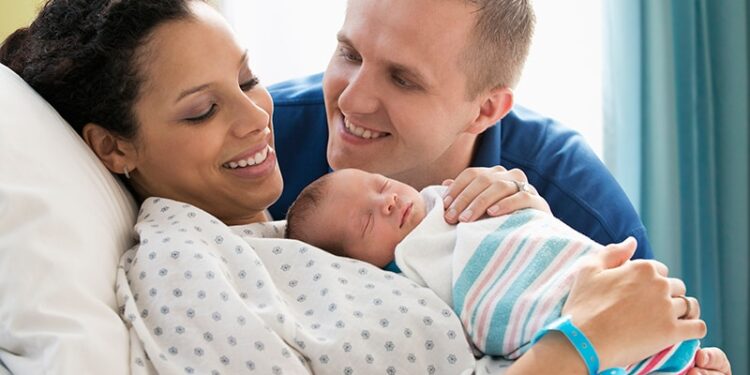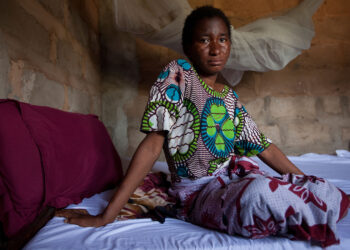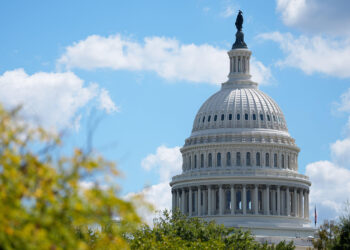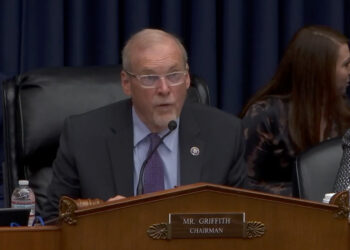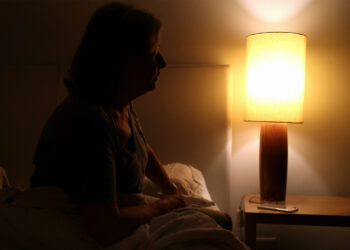The number of live births in England and Wales rose last year, the first increase since 2021, according to the Office for National Statistics (ONS).
There were 594,677 live births registered in 2024, up 0.6% from 591,072 in 2023.
England saw a 0.74% increase, while Wales recorded a fall of nearly 2%.
Despite the uptick, the rise was smaller than the 1.8% increase recorded between 2020 and 2021. The 2024 figure remained historically low, marking the third-lowest total since 1977.
Older Parents
The ONS reported a “notable” rise in births to older fathers, particularly those aged 60 and over. This group saw a 14.2% increase in live births, from 942 in 2023 to 1076 in 2024.
The trend toward older parenthood continued. Live births rose among parents over 30 and declined among those under 30.
The data reflected how people continue to “put off having children until later in life,” said Greg Ceely, head of population health monitoring at the ONS.
The largest increase in births by maternal age was seen among mothers aged 35-39, rising by 2.7%. The sharpest decline occurred in mothers under 20, falling by 4.6%.
Paternal age followed a similar pattern. Births to fathers under 30 fell, while most age groups over 30 saw increases. An exception was among fathers aged 45-49, where a dip of 0.6% was recorded.
Regional Differences in Birth Rates
Birth increases were driven primarily by London and the West Midlands. London recorded a 1.8% rise, while the West Midlands saw a 3.4% jump.
Five English regions saw a decline, including the South East, East, South West, and East Midlands. The North East saw the largest drop, at 1.4%.
Non-UK-Born Parents Make Up Growing Share
In England, 40.4% of live births last year involved at least one parent born outside the UK, up from 38.2% in 2023. In Wales, the figure rose from 17.5% to 19.4%.
London continued to have the highest proportion of births involving at least one non-UK-born parent. The North East had the lowest.
In Wales, Cardiff had the highest percentage (40.6%) of such births. Caerphilly had the lowest, at 8.9%.
A total of 33.9% of live births in England and Wales were to non-UK-born mothers, up from 31.8% in 2023. The share rose significantly among older mothers, reaching 55.5% for those aged 45 and over.
Among mothers under 20, 15.7% were born outside the UK.
India remained the most common country of birth for both non-UK-born mothers and fathers for the third consecutive year. Pakistan ranked second. Iraq entered the top 10 for mothers and remained tenth for fathers, having first appeared in 2023.
Other Key Trends
The stillbirth rate in England decreased slightly in 2024, from 3.9 to 3.8 per 1000 live births. In Wales, the rate rose from 4.0 to 4.4, returning to 2022 levels.
“A couple of other long-term trends are continuing, such as seeing around half of live births within marriage or civil partnership,” said Ceely. This proportion has remained stable since 2010.
Boxing Day remained the least common day for births, a feature that has persisted for 12 years. The most common date was 23 February.
Tuesday was the most frequent day for births (15.5%), while Saturday and Sunday were the least common (both 11.9%).
Rob Hicks is a retired National Health Service doctor. A well-known TV and radio broadcaster, he has written several books and has regularly contributed to national newspapers, magazines, and online publications. He is based in the United Kingdom.
Source link : https://www.medscape.com/viewarticle/birth-rate-rises-trend-older-parenting-continues-2025a1000hn8?src=rss
Author :
Publish date : 2025-07-02 18:29:00
Copyright for syndicated content belongs to the linked Source.

